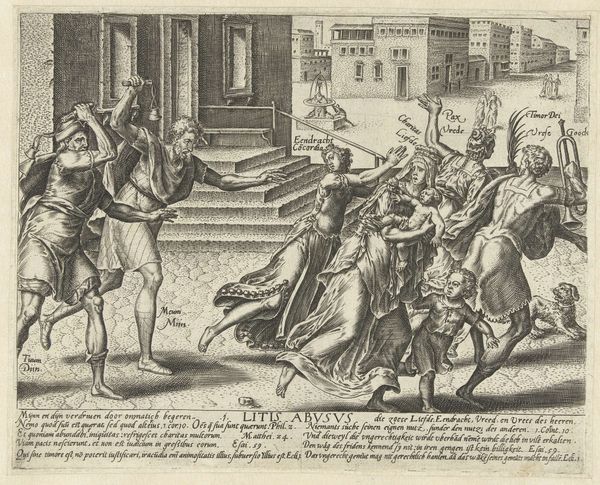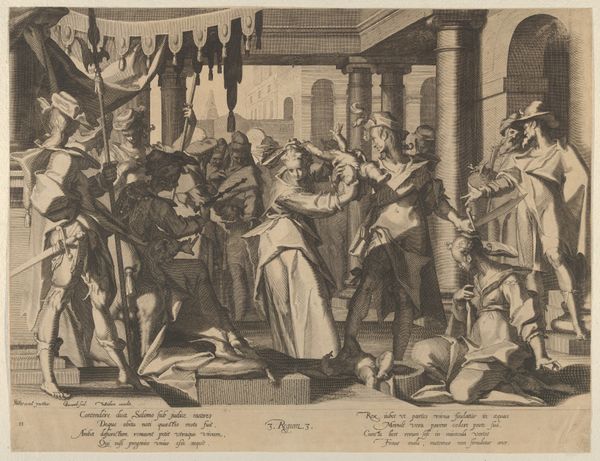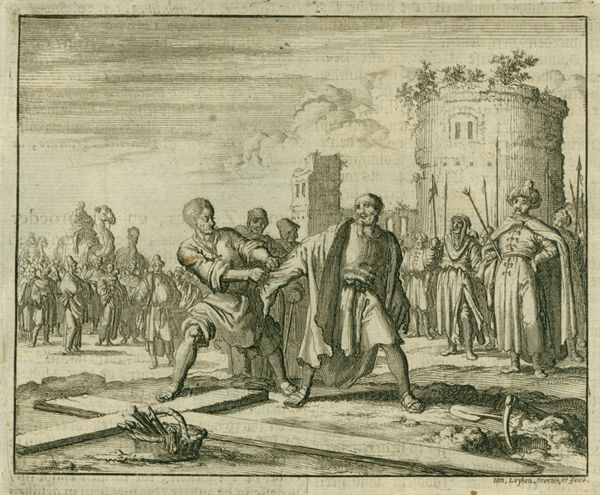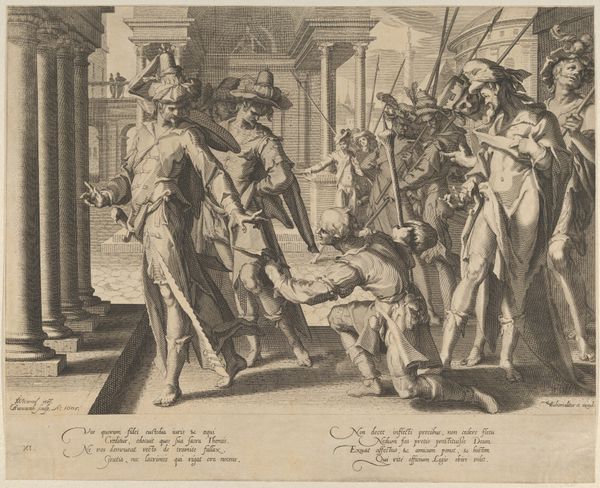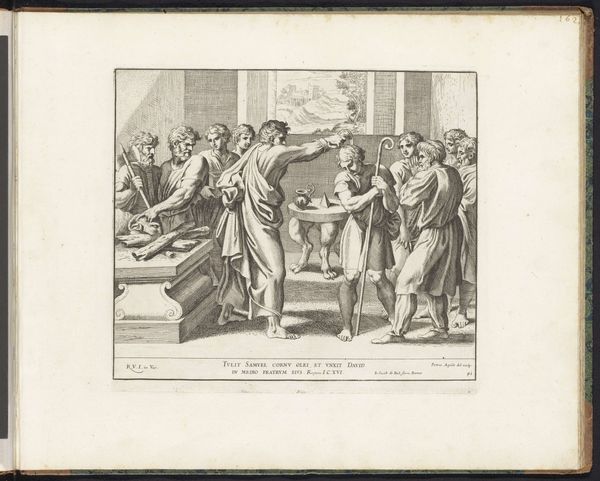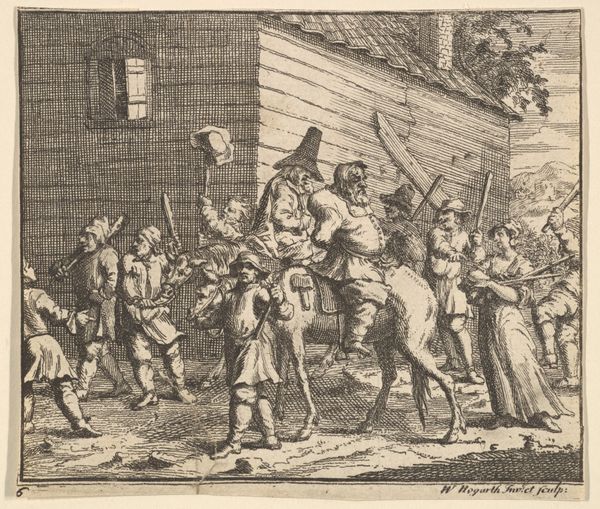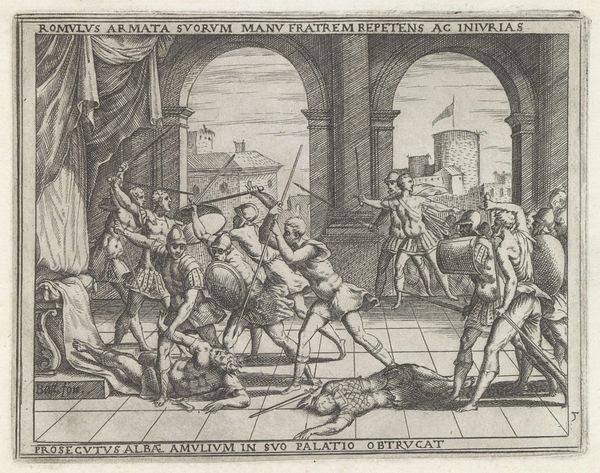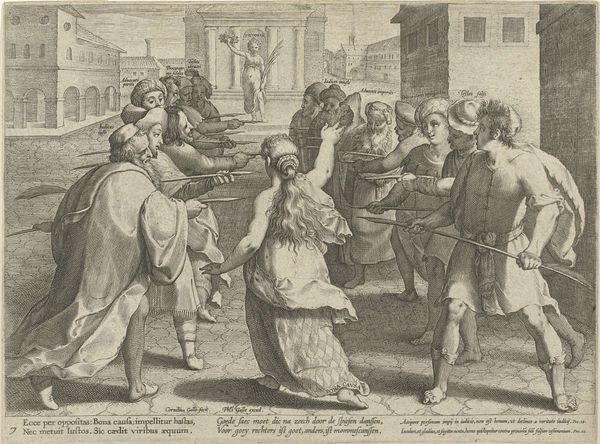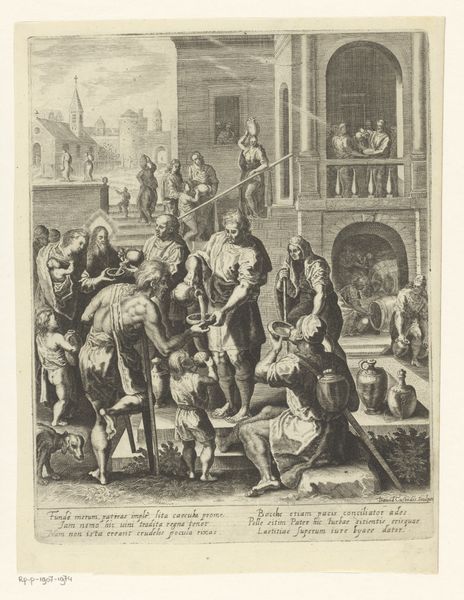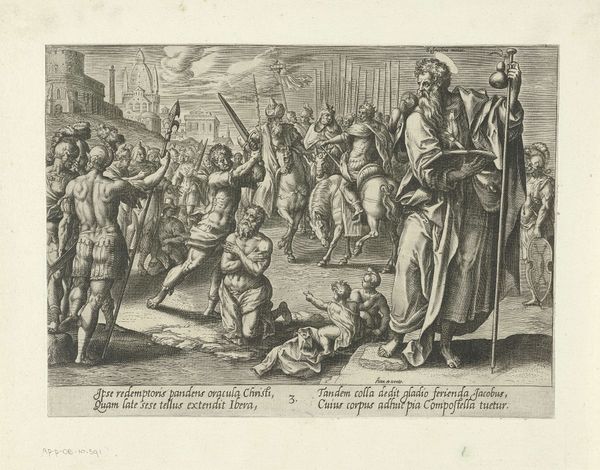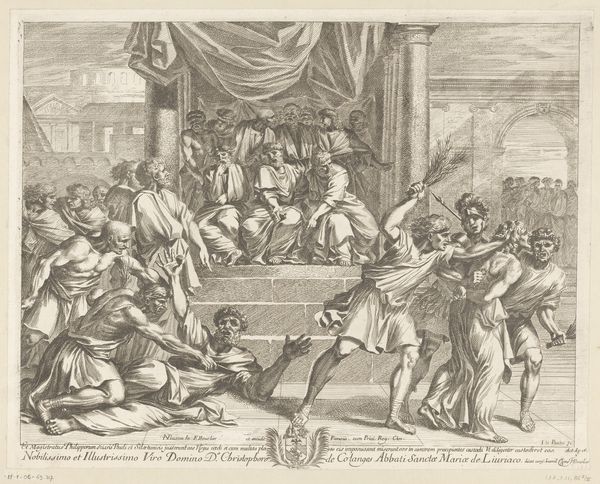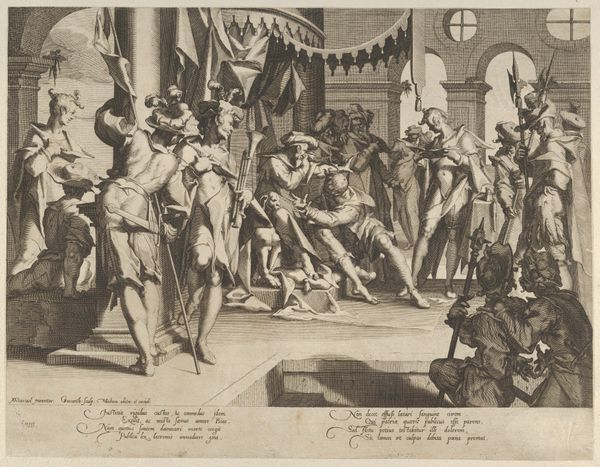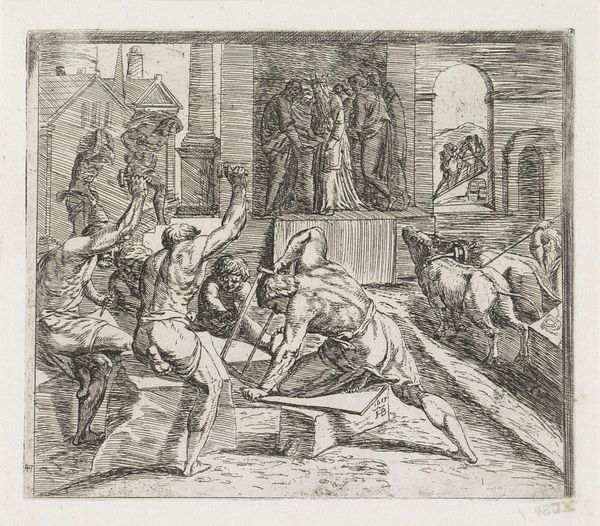
print, engraving
#
narrative-art
#
baroque
# print
#
old engraving style
#
figuration
#
history-painting
#
engraving
Dimensions: height 361 mm, width 261 mm
Copyright: Rijks Museum: Open Domain
Curator: This engraving, simply titled Uitgebrand huis op de Leidsegracht, presents a chaotic scene, doesn't it? Editor: It does! My immediate thought is how meticulously detailed this print is; you can almost feel the scratch of the burin on the copper plate. It seems intensely labored. Curator: The image before us, dating from before 1690, and held at the Rijksmuseum, is the work of Joseph Mulder. It is a scene taken from the Book of Genesis depicting an angry mob attempting to reach the angels whom Lot has taken into his home. Editor: And look how Mulder depicts this attempt: these figures—are they Roman soldiers, city guards, members of the town watch?—are thrusting themselves against a celestial glow that engulfs Lot and his divine visitors. I imagine there would be much preparation of materials needed for such prints in this period. It is likely that only workshops employing journeymen would take up such jobs. Curator: It speaks to the complex social anxieties of the time, perhaps related to societal unrest but filtered through biblical narrative. Note the engraving cites the Vulgate— "Gen. XIX"—situating itself within a very specific theological and intellectual framework of seventeenth century Europe. These depictions of angelic judgement appear during times of intense transformation and theological schism. Editor: I'm thinking of the role the copper itself would have played. The act of taking a burin and scratching an image onto the copper to prepare it for printing. Its social context—that this piece might have been produced by someone with less cultural capital doing piece work. The choice to disseminate through engravings. All this is interesting in thinking about value, what Mulder valued. Curator: Exactly. It compels us to ask what this imagery was designed to achieve, and whom it was aimed to persuade. Perhaps the relative cheapness of an engraved copy allowed this story to become accessible to different audiences in a way other more expensive painted versions may not. Editor: I keep coming back to that laborious detail. The time spent etching those lines, repeating biblical tropes. Perhaps Mulder’s commitment lies precisely in making this visible: labor, process, biblical history etched in copper. Curator: Yes. Mulder has certainly left us with much to consider. Editor: A fascinating intersection of skill, labour, and narrative. I am thankful to see more of these lesser-known baroque masterpieces.
Comments
No comments
Be the first to comment and join the conversation on the ultimate creative platform.
